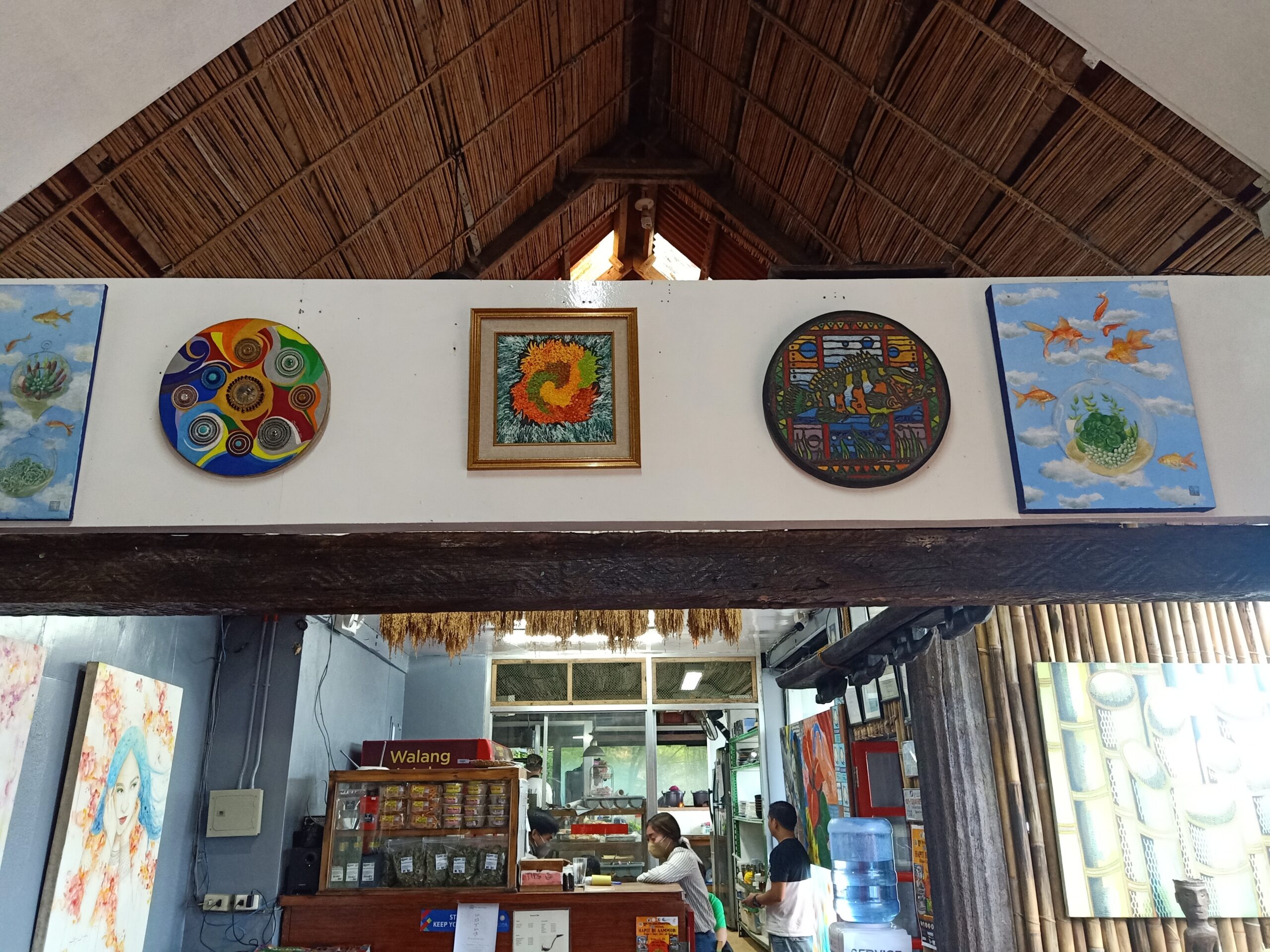
AFTER two years of online festival activities, the 12th edition of the Tam-awan International Arts Festival (TIAF) returned to the village on Oct. 5 to 9.
Upon arrival at Tam-awan Village in Baguio City, visitors were greeted by images outlined on the main venue’s façade that was yet to be fully painted. Upon entering, artists were seated at tables and concentrating on finishing their pieces. A group of cultural performers danced to entertain guests before the next talk or workshop began.
Built in 1998, Tam-awan Village is a three-hectare space that resembles a traditional Cordillera village. Its Ifugao houses serve as the venues for art exhibits, workshops, and live cultural showcases. It was established by the Chanum Foundation, Inc., an organization dedicated to the promotion of arts, culture, and heritage. Tam-awan Village is now a popular hub for artists and art enthusiasts. It also has a café and offers lodging in the traditional houses to tourists and workshop participants.
THE FESTIVAL
With the growing population of artists in the area, the Tam-awan International Arts Festival was established in 2010 after years of Tam-Awan having hosted art workshops.
“Nagkaroon ng art festival dahil sa mga nangyayari na art workshops (The art festival came about because of the art workshops),” solar artist Jordan Mang-osan, who is the president of the Chanum Foundation, told BusinessWorld during the festival on Oct. 8.
He said that the Foundation and local artists mounted the festival with the goal of inviting artists and groups from outside the city of Baguio, and “to help our local artists showcase their craft,” he said.
“Art is a very powerful tool to preserve visual records of time and experiences and it is a visual aid for people to see the world in different and innovative ways. Art is a vehicle that can transport ideas and the wisdom of cultures to the current generation,” Mr. Mang-osan said.
The first TIAF was held at the Baguio Convention and Cultural Center and officially moved to Tam-awan Village itself in its second year. The village has hosted the arts festival ever since.
This year’s festival had the theme “Hapit Di Aammod: Wisdom in Shapes, Colors, and Words.” “Hapit di Aammod” translates to “voice of the ancestors” in Tuwali, an indigenous language spoken in Ifugao.
The festival was held in partnership with the National Commission for Culture and the Arts (NCCA).
This year’s festival had 189 participating artists and almost 70 cultural workers in attendance. Activities included workshops on coffee painting, stone art, digital art, statue making, cultural performances, and Cordillera rituals.
INTELLECTUAL PROPERTY RIGHTS
During the festival, the Chanum Foundation and the Intellectual Property Office of the Philippines (IPOPHL) signed a memorandum of understanding in an effort to educate artists on copyright and protection of their works.
“Like the Tam-awan Village, I hope the partnership we seal today deepens your people’s perspectives not only on indigenous art but also on copyright and intellectual property,” IPOPHL Directory General Rowel S. Barba said at a press conference during the festival.
“Together, we would like to see the Cordilleras harvest the full rewards from your creation, and the intellectual property system helps you safeguard your works in all their authenticity and value — not only in terms of monetary value but, more profoundly, its value to Cordillera’s culture,” he added.
Following the signing of the agreement was a seminar on copyright and resale rights in the visual arts.
The IPOPHL has conducted more than 200 webinars on intellectual property. Mr. Barba said that his office is committed to bringing education on intellectual property to other cities. “’Iyung mga pwedeng puntahan na probinsya at barangay, pupuntahan namin (We will visit the provinces and barangays which we can go to),” he said
“It’s a universal principle that copyright starts from the moment of creation… but for practical purpose because sometimes your collaborators or partners will ask for it. The proof copyright is your registration. We encourage artists to have it recorded,” Mr. Barba explained.
The National Library is the primary institution that registers copyright. “But IPOPHL has been licensed by the National Library to accept registry,” he said.
OUTREACH PROGRAMS
The TIAF has also embarked on a series of outreach programs called Art Caravans benefitting teachers and students at the Santol Central School in La Union with workshops on acrylic paint, wire rings, pastel, sand art, stone art, and screen printing.
The festival closed with the unveiling of murals and art collaborations and ceremonies marked with rituals and thanksgiving.
“Harinawa, ito’y magpatuloy para maging maayos at mas lalo pang mapalaganap ang produkto, kultura at sining ng mga Pilipino (May it be that this will continue and strengthen the products, culture, and arts of the Filipino,” NCCA Chairman Rene Escalante said, adding that the festival’s online activities have widened the reach to new audiences in the past two years.
As pandemic restrictions ease, Mr. Mang-osan hopes that next year’s festival will include more international participants.
“We will strive to continue the Tam-Awan International Arts Festival,” he said.
For more information, visit https://tamawanvillage.com/tiaf-2022-virtual-exhibit/ and https://www.facebook.com/TamawanOfficial. — Michelle Anne P. Soliman
Tam-awan Arts Fest returns to the village
Source: Bantay Radio
0 Comments